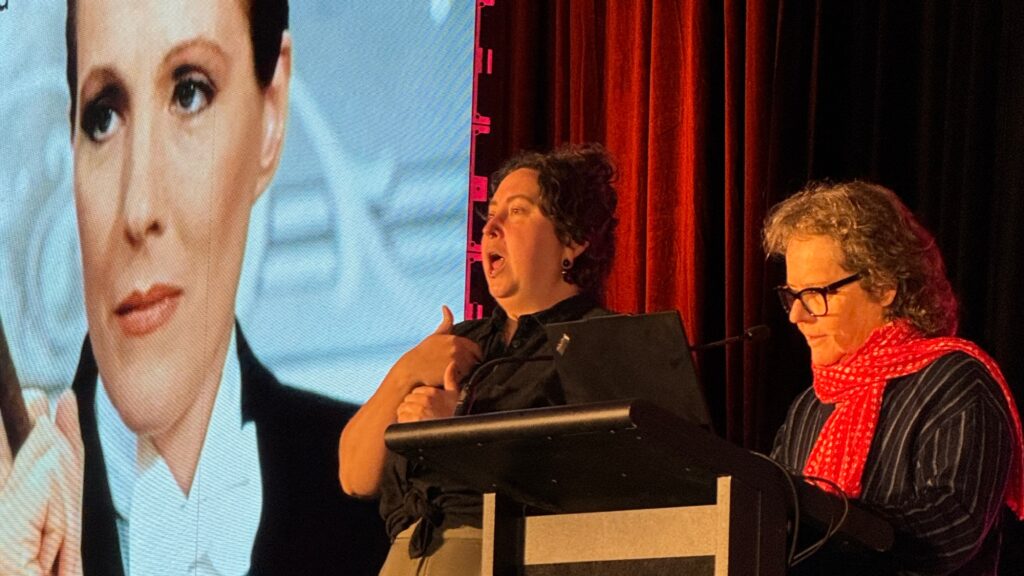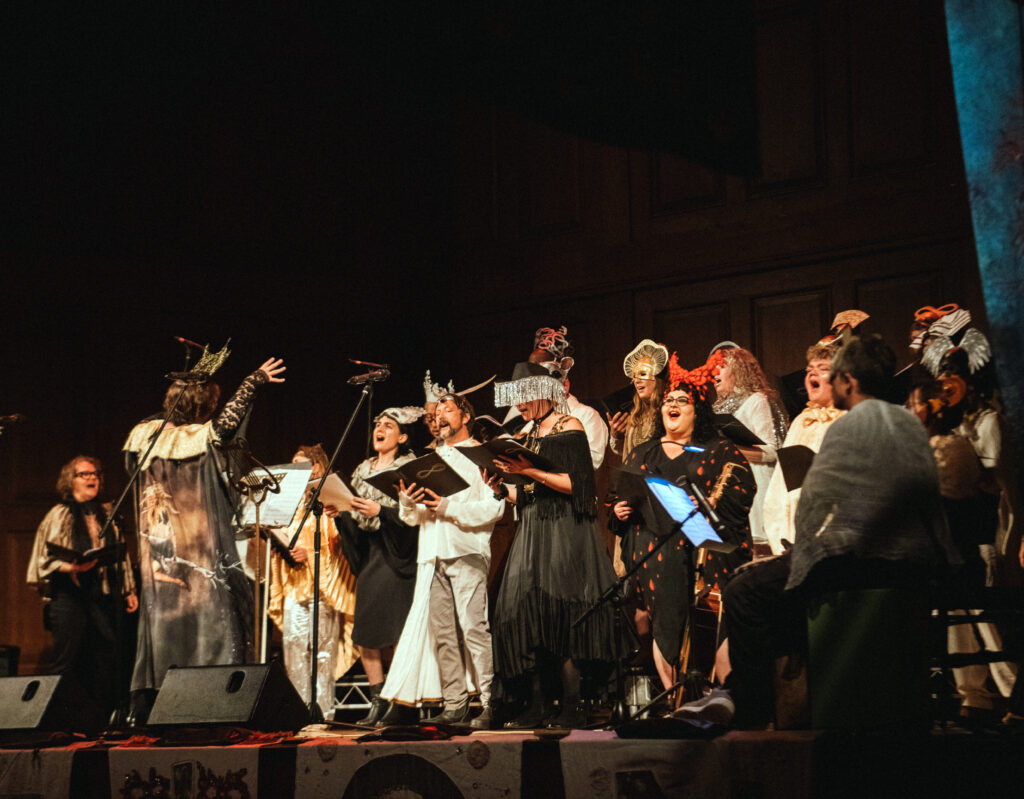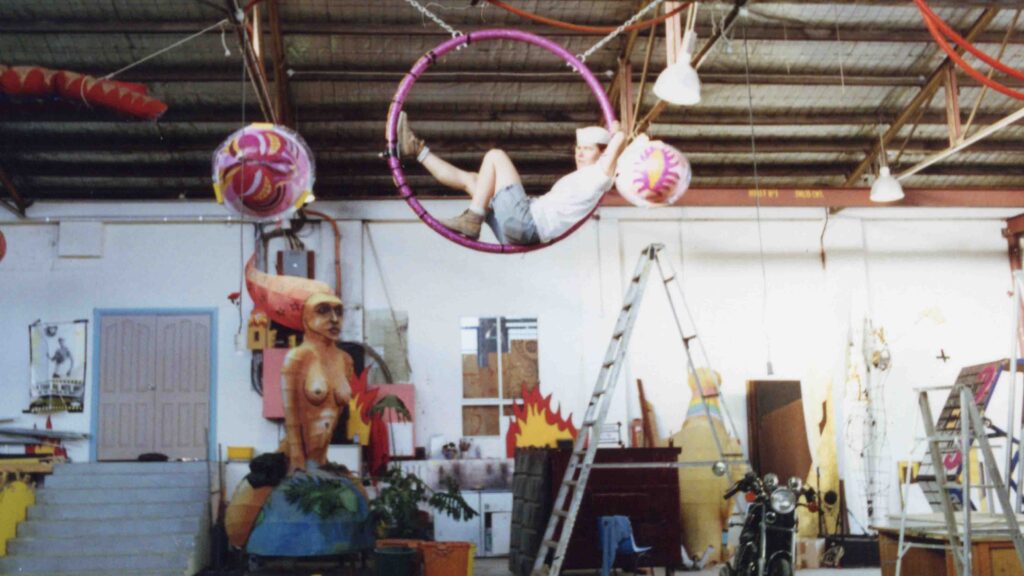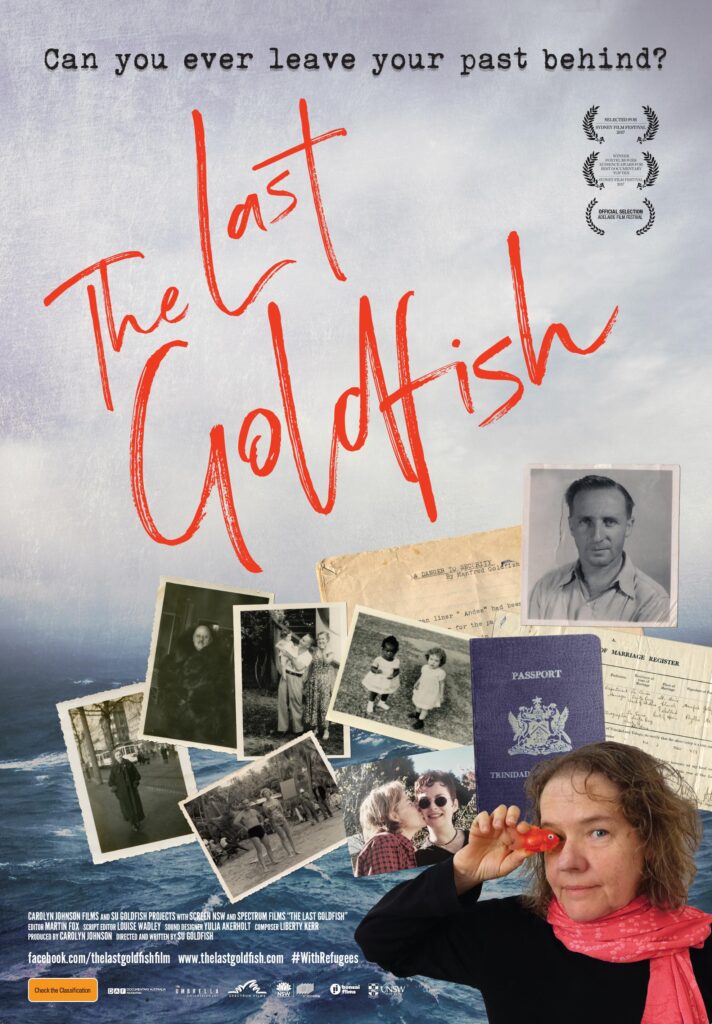Creative Profile: Su Goldfish
Su Goldfish is a freelance arts worker and filmmaker. Her arts practice ranges across producing, performance and film. Recently she has taken on financial wrangling and bookkeeping for arts organisations and artists. Until 2020, Su was the manager and producer at the UNSW Esme Timbery Creative Practice Lab. Though not currently a resident, she has worked on many projects in the Inner West. CREATION was part of the Biennale of Sydney’s EDGE festival program last year, and Su was a guest performer at Queer Power Point at the White Bay Power Station, recently re-presented at Creative Tool Box at Marrickville Town Hall.
Did you want to be involved in the arts from the get go?
I always liked photography and movie cameras, thank you dad. In high school I made a stop motion animation with my bestie using my dad’s 8mm camera and a cable release. Plasticene aliens come to the aid of us humans to stop the destruction of a neighbourhood by a giant developer bulldozer with a huge mouth that threatens to eat everyone up including their houses. Sadly the bulldozer won…not sure what that said about the hopes and fears of two schoolgirls in 1975.

What scope of work have you undertaken across the years of your arts practice?
I never focused on one discipline. It is more that I get a bug about something and then choose the medium in which I would like to tell that story. Sometimes it is words, sometimes film or performance. I love working collaboratively. I was part of a performing girl gang called COW in the 90s; we had a couple of outings at Club Bent. We were daggy edgy, which I loved.
I love working on other people’s projects as a producer or maker. I’ve had the pleasure to work with some great people: William Yang on his trio of films based on his live shows; artist Bonita Ely and her wild installations; and currently my gorgeous partner, Deborah Kelly, who has embarked on this complex, madcap art project CREATION, a queer, insurrectionary climate change religion.

How did you find your way into filmmaking?
I started volunteering at AFTRS doing production and I made great contacts. Once you’ve worked in film, you bond for life. It is trial by fire! I studied documentary at AFTRS which helped me survive the highs and lows of making an independent feature. Filmmaking is all about the team of people who sign up to be part of your project. I believe process and collaboration delivers.
Gender and religion seem to be important issues in your work. Can you talk about why and how?
I’m queer, a lesbian, a woman, somewhat Jewish, and a whole lot atheist….it has all been important! I worked as a carpenter in the building industry and made sets and props for Mardi Gras parties. I was a young lesbian in 1978 when we hit the streets demanding our rights. Our experiences and stories shape us.
In terms of religion, I wanted to explore my father’s story. He was a German Jewish man who didn’t believe in religions or nations. ‘They just make trouble’, he used to say. He wanted to be a citizen of the world. How did this man, from a strict, observant family, who lost nearly every single family member during the Holocaust, distance himself from any sense of religious, cultural or national identity? Was this something to aim for? The trauma of his life made him leave the past behind. Moving on was his way of surviving.

In your documentary film ‘The Last Goldfish,’ you deal with your family’s experience as refugees escaping the Nazis. One generation on, how do you feel this background has shaped your sense of your own identity and your creative work?
Life is complex; we all have stories and beliefs that make us who we are. But falling into convenient narratives that dehumanise other people or groups serves no-one. My father avoided death by the skin of his teeth. He escaped to Trinidad in the West Indies, where I was born. A week after he arrived with his first wife, the English colonial authorities closed that escape route and refugees like them were turned away. In 2017 when I was finishing the film, we were fighting the disgraceful treatment of asylum seekers in Australia. I wanted to remind people that many Australians came from refugee backgrounds; that we must treat asylum seekers with compassion, not lock them up. Now, my family’s experiences make me acutely aware of the horrendous violence being brought down on the Palestinian people. Humans are unbelievably bad at learning from the past.

What sort of programs or projects did you undertake at the UNSW Creative Practice Lab? In your experience, is a university a fertile place for creative cultural work?
The UNSW Esme Timbery Creative Practice Lab, named in honour of the La Perouse elder who made stunning shell works, was an oasis in the university where artists and students met. Working with academic and production staff, The Lab became a haven for independent artists. The flexible spaces we managed transformed into film sets, writers’ retreats, performance spaces, residency and development spaces; they were magical. Universities are rich in resources and if you can access them, it can be a strategic way to get support for your practice. The current diminishing of arts disciplines is devastating. So much of my thinking and the way I process information came from my arts degree. It is a place for the curious, and all artists are curious people.
In your financial management work for artists and arts organisations, what do you observe are the particular financial challenges they face?
Artists have low and irregular incomes; it is stressful. Most people need a day job to survive. I want artists and performers to be paid properly. I want them to demand to be paid super, to get NAVA rates or Live Performance Award rates, and to get tax refunds. And if I can help with a bit of organising and adding up then I’m happy. Know your rights!
Article by Tamara Winikoff
Tamara Winikoff is an independent consultant with extensive experience in arts advocacy, policy, and cultural leadership. She was a a founding member of the Inner West Creative Network and served as Executive Director of the National Association for the Visual Arts (NAVA) for 22 years, championing artists' rights and sector development. As Co-convenor of ArtsPeak, she coordinated national arts policy initiatives. Previously, she managed the Community, Environment, Art and Design (CEAD) program at the Australia Council for the Arts and lectured in Cultural Environment and Heritage at Macquarie University. Based in Sydney, she continues to influence the cultural landscape through strategic consultancy.
